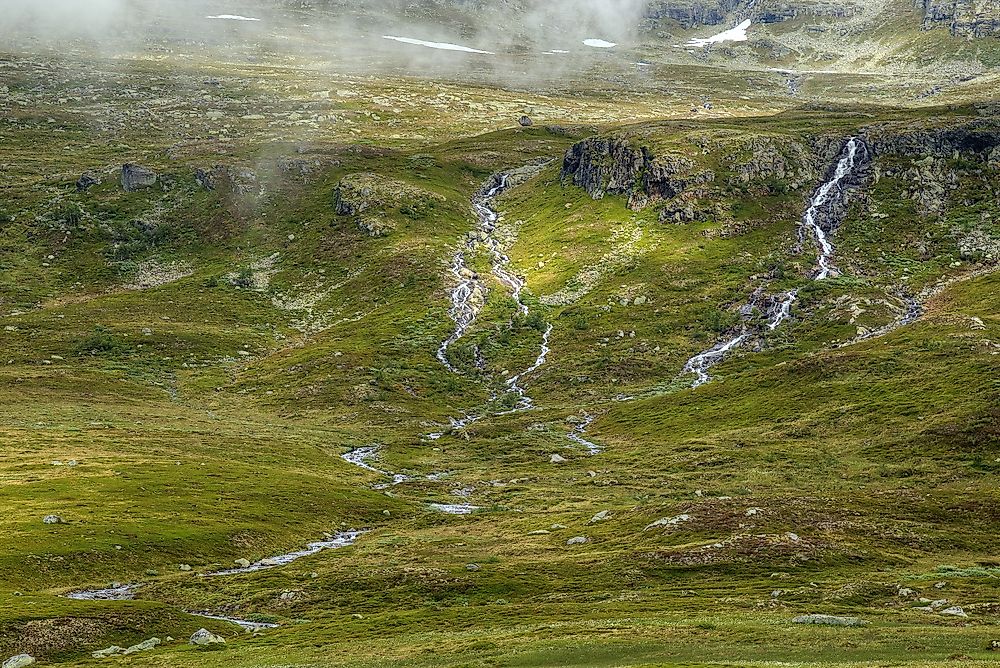What Is A Rill In Geography?

Rills are shallow channels no more than a few tens of centimeters in depth and width. These channels are cut into the soil by flowing water, which results in a form of soil erosion known as rill erosion. Small rills are known as microrills, which can eventually grow into rills depending on the amount and frequency of water flowing through them. If left untouched, rills develop into gullies, which are bigger incised channels similar to rills but deeper and wider.
Rills Formed by Erosion
Rills are common features on sloping ground, particularly hillslopes. They form most frequently on land where the soil is left unprotected against runoff from slopes. A rill is likely to develop where there is frequent movement of water on the sloping ground. In agricultural operations, the soil is often left bare, and therefore rills may form on farmland during these periods. Rills may also develop as a result of deforestation, which leaves the soil exposed.
Formation of Rills
To the trained eye, rills are relatively easy to identify when they are first incised into the soil. The development of rills is usually the first sign of an enduring erosion problem. The gradient of the slope determines how deep a rill is likely to become, while the permeability of the soil controls the number of rills that develop. Loamy and sandy soils are particularly prone to the formation of rills, whereas clay is somewhat resistant to rill formation. Rills begin to form when the tearing force of surface runoff overcomes the shear strength of the soil. A soil’s shear strength refers to its ability to resist forces that may be working parallel to the surface of the soil.
Effects of Rills on Human Activities
Although rills are small, they carry considerable amounts of soil every year, and therefore have significant impacts on the landscape. They are often a problem on archaeological sites and have been shown to wash away these sites. Rills also impact agricultural activities, stripping lands of significant quantities of arable soil. However, the development of rills on agricultural lands is usually a direct response to these agricultural activities. Tractor wheel impressions, for instance, channel water and provide the ideal environment for the formation of rills. Rills are usually the easiest forms of erosion to control. Proper management of fields not only controls the development and growth of rills, but also makes it possible to easily remedy their effects.
Uses of Rills
Despite their negative effects, rills are easy to control and manage, and this has allowed for the adoption of artificial rills. In landscaping, agriculture rills are an essential tool for moving water around. Artificial rills are constructed in farms to carry water from a distant source. This type of agriculture has been employed since as far back as ancient Egypt. In gardening and landscaping, artificial rills are constructed for aesthetic purposes. Rills have other minor uses in fish farming, where they are not only used for aesthetics but also to connect multiple ponds.











